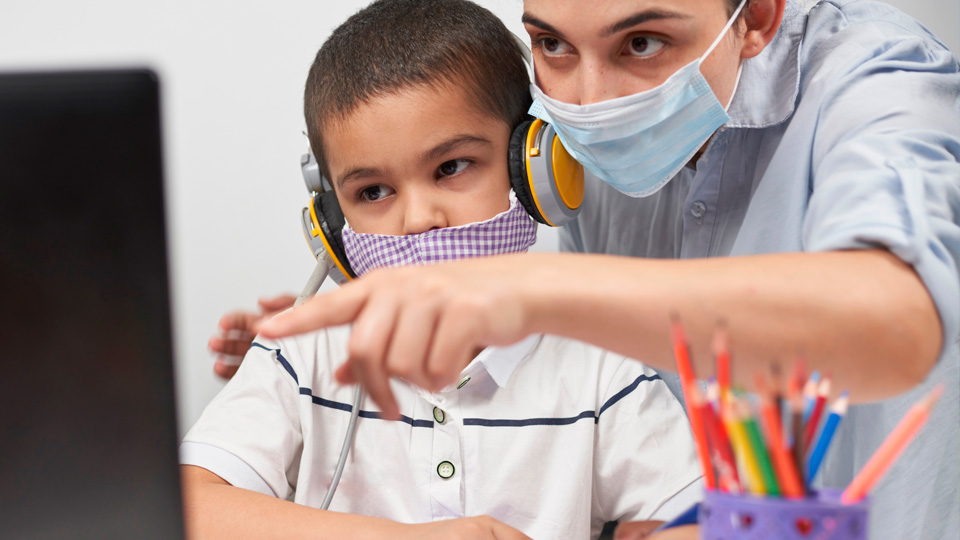Diabetes and Eye Health: Good Nutrition Matters
26/11/2025

24/06/2021
The debate about the use of screens in childhood is more open than ever.
The last circumstances after the pandemic, the lockdown, the home schooling and the changes in the lifestyle have made the overuse of the Ipads and mobile screens in children. This has meant that more and more children spend too much time in front of the screen. This entails a series of consequences not only in the socialization of the children but also in their eye health.
The question is, does excess screens really damage children´s eyesight?
The American Academy of Ophthalmology warns of the visual consequences of screen overuse because there is a worldwide epidemic of myopia, also known as nearsightedness. Since 1971, the incidence of nearsightedness in the US nearly doubled, to 42 percent. In Asia, up to 90 percent of teenagers and adults are nearsighted. Clearly, something is going on. Various studies conclude that the worldwide increases in myopia is closely relates with near work activities. On the other hand spending time outdoors -- especially in early childhood -- can slow the progression of nearsightedness.
Besides these kids are no different from adults when it comes to digital eyestrain. They can experience dry eye, eye strain, headaches, and blurry vision, too. While symptoms are typically temporary, they may be frequent and persistent, this doesn't mean they need a prescription for computer glasses as some say, however it´s advisable to go to the ophthalmologist to rule out the need to use an optical prescription for those who need it. It also doesn't mean that blue light coming from computer screens is damaging their eyes. It means they need to take more frequent breaks. This is because we don't blink as often while using computers and other digital devices. Extended reading, writing or other intensive near work can also cause eye strain. It´s recommend taking a 20 second break from near work every 20 minutes.
Here are some tips to help protect your child's eyes from computer eyestrain:
-Avoid the use of electronic devices in children under 18 months (except video calls)
-Between 2-5 years of age, limit the use of electronic devices to one hour a day, choosing high-quality programs or applications (that stimulate creativity, imagination, social relationships…).
-Restrict its use during meals and one hour before bedtime.
-Use the rule “20-20-6”: for every 20 minutes of close work, look for at least 20 seconds at distance than 6 metres. Using alarms or timer to remind them.
-Alternate the use of e-books, with traditional books, recommending that they look out the window each time they finish a chapter or when they reach previously established marks.
-Avoid using screens outdoors in a very bright areas.
-Adjust the brightness and contrast so that its use is as comfortable as possible.
-Encourage children and adolescents to keep the screens at a distance of at least 30 cm and, ideally, greater than 45-60 cm, when possible.
-Remind them to blink when watching a screen.
-Use good posture when using a computer and when reading.
-Go to Ophthalmological check-ups to rule out pathology associated.
Cataracts, glaucoma and paediatric ophthalmology specialist
Specialist in Ophthalmology